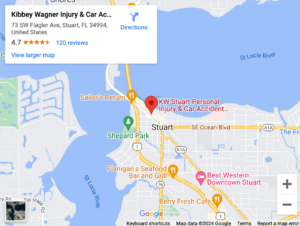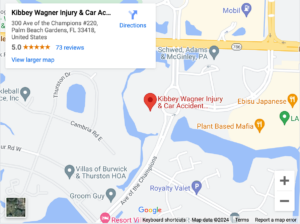
Back injuries happen daily, with wide-ranging results. After you injure your back, you might push through minor pain for a few days and then feel fine again. On the other hand, a back injury can result in paralysis or other life-altering consequences.
Most types of back injuries involve some sort of trauma to the spine. If you’ve recently injured your back, it helps to understand the exact type of injury you’re dealing with and the expected treatment options, costs, and long-term outcomes.
Types of Back Injuries

Back injuries can take many forms. Many of them involve trauma to the spinal column, which runs from the base of the skull down to the pelvis. Back injuries can be one of the most catastrophic forms of injury, especially when they result in paralysis. However, injuries to the back are highly unique.
The type, severity, and implications of a back injury depend on exactly how the back is injured and how bad the injury is. The spinal column is highly complex, and bones, soft tissue, and nerves can all be affected by an injury.
Certain types of back injuries occur more often. If you’ve injured your back, there’s a good chance you’re dealing with one of these types of injuries.
Herniated Discs
Herniated discs, also called slipped or ruptured discs, occur when the soft inner section of a spinal disc slips through the outer layer. Without this cushioning, the spine can’t move properly. This often leads to nerve compression, which can result in numbness, tingling, loss of strength, and pain.
Fractured Vertebrae
A fractured vertebra is when the bones of the spine crack or break. Compression fractures, axial burst fractures, and chance fractures are three common types of spinal fractures. Fractured vertebrae can vary in severity, and treatment recommendations typically depend on the type and location of the break.
Sprains and Strains
While back injuries often involve damage to the spinal column, this is not always the case. The back is also composed of muscles, tendons, ligaments, and other soft tissues, which can be injured in a variety of ways.
While sprains and strains might sound less severe than a spinal injury, they can have a lasting impact on strength and mobility, lead to chronic pain, and require surgery.
Other Back Injuries
While herniated discs and spinal fractures are some of the most common spinal injuries, they’re by no means the only ones.
Other common types of back conditions that involve damage to the spinal column include:
- Spinal stenosis
- Degenerative disc disease
- Spondylolisthesis
- Sacroiliitis
As with any back injury, the specific symptoms and treatment required for these conditions often vary by individual.
Common Causes of Back Injuries
Back injuries happen in many ways. Being crushed, falling, and sustaining trauma all commonly result in back injuries, and they can occur in a variety of ways.
Some of the most common situations associated with serious back injuries include:
- Car accidents
- Motorcycle accidents
- Workplace accidents
- Falls
- Sport accidents
- Assaults
Often, a back injury can be directly linked to a specific accident, such as a slip and fall accident or a car crash. However, the back can also be injured through repetitive motion over time.
Sometimes, back conditions like degenerative disc disease might seem like a natural result of aging. However, chronic back conditions are often related to activity in the workplace and may entitle the injured person to worker’s comp coverage, even though an accident didn’t occur.
Diagnosing a Back Injury
How a person responds after a back injury often depends on the circumstances. If you have a visible injury or other serious symptoms like loss of consciousness or paralysis, immediate medical attention isn’t optional. However, it’s important to always be checked by a doctor anytime the back sustains trauma.
Some back injuries aren’t immediately apparent. It can also be easy to dismiss symptoms like pain or stiffness as natural after an accident. In reality, symptoms like these often indicate a serious injury. When this is the case, symptoms tend to worsen over time, as back injuries rarely heal on their own.
It’s best to take the time to see a doctor after an accident that involves the back. A doctor can look at the symptoms and order imaging like an X-ray, CT scan, or MRI. Since the spinal column is highly complicated, accurately diagnosing a back injury requires a medical professional’s opinion.
Back Injury Treatment Options
Back injury treatment begins with diagnosis. This usually involves a physical exam and imaging tests to identify the problem. Once a doctor can diagnose the type of back injury, they can recommend treatment options.
Treatment for a back injury may include:
- Surgery
- Physical or occupational therapy
- Rest
- Applying ice or heat
- Alternative therapies like chiropractic care or acupuncture
Since there are various common types of back injuries, it’s easy to see that treatment options can range widely. However, there’s also no set treatment recommendation for a specific type of injury. Instead, treatment is based on a variety of case-specific factors.
Long-Term Back Injury Outcomes
The long-term outcome of a back injury depends on the type of injury and how it impacts the injured individual’s physical abilities. A severe back injury that results in full or partial paralysis may lead to lasting paralysis. In other cases, surgical intervention and therapy can lead to regained mobility.
Some individuals manage to make a full recovery after a back injury. In other cases, they may live with long-term symptoms like pain, tingling, weakness, and reduced mobility. Factors like age and genetics also affect the body’s ability to heal from a back injury.
It’s hard for doctors to predict how an individual will respond to treatment, so it’s not always possible, even for experienced medical professionals, to accurately predict an outcome.
Back injuries that have a lasting impact on physical health usually impact all other aspects of life, as well. A serious back injury, or one that leads to lasting symptoms, may result in an inability to work or fulfill responsibilities at home.
Contact Our Stuart Back Injury Lawyers Today for a Free Consultation
Back injuries are often extremely costly to treat, often leading to high medical bills and lost wages. When a return to work is impossible, or an injury leads to the need for long-term attendant care, a back injury can be financially devastating.
Our experienced Stuart personal injury attorneys at Kibbey Wagner Injury & Car Accident Lawyers are available at (772) 444-7000 to review your case and discuss your options for recovering back injury compensation.



